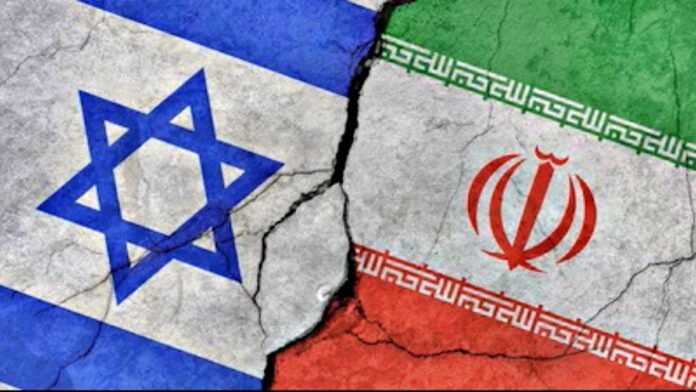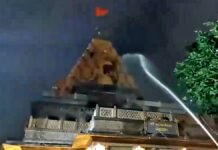
Key Points
- Iran has a larger standing army, but Israel’s military is more technologically advanced and agile.
- Israel’s air force and missile defense systems (Iron Dome, David’s Sling, Arrow) are world-leading, giving it a critical edge in air and missile warfare.
- Iran relies on a vast arsenal of missiles, drones, and powerful proxy groups like Hezbollah, Houthis, and Hamas for asymmetric warfare.
- Israel’s defense budget is double that of Iran, and it enjoys strong US support, while Iran faces international sanctions but has ties to Russia and China.
- A short, high-tech war favors Israel; a prolonged conflict with proxy involvement could benefit Iran.
- The conflict has already triggered a 10% spike in global oil prices and could destabilize the entire Middle East, directly impacting India and the world.
Israel vs Iran: Military Strength Comparison and War Scenarios
Manpower: Numbers vs. Readiness
| Country | Active Soldiers | Reserve Soldiers | Total Forces (incl. paramilitary) |
|---|---|---|---|
| Iran | 610,000 | 350,000 | ~1,100,000 + 150,000 IRGC |
| Israel | 170,000 | 465,000 | ~635,000 |
- Iran: Holds a numerical advantage, with over a million in total security forces, including the powerful Islamic Revolutionary Guard Corps (IRGC).
- Israel: Smaller standing army, but reserves are highly trained and can be mobilized within hours, thanks to mandatory military service and regular drills.
Air Power: Quality Over Quantity
| Country | Combat Aircraft | Attack Helicopters | Drones & UAVs | Air Defense Systems |
|---|---|---|---|---|
| Iran | 186 (mostly outdated) | 13 | Large, advanced fleet (Shahed drones) | Basic, some Russian systems |
| Israel | 240 (F-35s, F-16s, F-15s) | 48 | Advanced UAVs, loitering munitions | Iron Dome, David’s Sling, Arrow 2/3 |
- Israel: Superior technology with stealth F-35s, advanced UAVs, and the world’s most effective layered missile defense (Iron Dome, David’s Sling, Arrow 2/3).
- Iran: Relies on drones and missile barrages. Its air force is mostly made up of older aircraft, but it has made rapid advances in drone and missile technology, including hypersonic and long-range ballistic missiles.
Naval Power: Asymmetric Threats
| Country | Warships | Submarines | Special Capabilities |
|---|---|---|---|
| Iran | 107 | 25 | Floating missile/drone platforms, swarm tactics, anti-ship missiles[8] |
| Israel | 62 | 5 | Dolphin-class subs (possible nuclear), high-tech naval warfare |
- Iran: Focuses on asymmetric warfare fast attack craft, missile boats, and floating drone/missile platforms that can harass shipping and threaten the Strait of Hormuz.
- Israel: Fewer ships, but technologically advanced, with submarines believed to have second-strike nuclear capability.
Missile and Drone Arsenal
- Iran: Has thousands of ballistic and cruise missiles (some with over 2,000km range) and a vast fleet of attack drones (Shahed-136, used in Ukraine and Yemen). Its proxies can launch rockets and drones at Israel from Lebanon, Gaza, Syria, Iraq, and Yemen.
- Israel: Relies on precision-guided munitions, advanced air defenses, and can intercept most incoming threats. Its Arrow 3 system can shoot down long-range ballistic missiles, including those outside the atmosphere.
Defense Budgets and Global Support
| Country | Annual Defense Budget | % of GDP | Major Allies |
|---|---|---|---|
| Iran | $15 billion | 2.5% | Russia, China |
| Israel | $30 billion | 5.8% | USA (major military aid), Europe |
- Israel: Receives billions in US military aid, enjoys cutting-edge military technology, and has full diplomatic and logistical support from the US and most Western nations.
- Iran: Faces heavy sanctions but maintains ties with Russia and China, and leverages proxy groups for regional influence.
Nuclear Capabilities
- Israel: Widely believed to possess nuclear weapons, though it maintains a policy of ambiguity.
- Iran: Has enriched enough uranium for several bombs, but is not believed to have operational nuclear weapons yet. Israel’s recent strikes aimed to delay or destroy Iran’s weaponization efforts.
Proxy Warfare and Regional Impact
- Iran: Uses Hezbollah, Hamas, Houthis, and Shiite militias to pressure Israel on multiple fronts, making any conflict multi-dimensional and harder to contain.
- Israel: Focuses on direct, high-precision strikes and rapid mobilization, but faces the risk of a multi-front war if proxies are activated.
War Scenarios: Who Has the Edge?
- Short, High-Tech War: Israel’s technological edge, superior air force, and missile defenses would likely give it the upper hand, especially with US support.
- Prolonged, Multi-Front Conflict: Iran’s numerical advantage, missile/drone barrages, and proxy groups could bog Israel down, disrupt regional stability, and threaten global oil supplies.
- Global Impact: Oil prices have already surged over 10% since the strikes, and any escalation could disrupt shipping through the Strait of Hormuz, affecting economies worldwide, especially energy-importing nations like India.
Who Would Win?
- Israel is favored in a short, high-tech conflict due to its advanced military, robust air defenses, and strong Western backing.
- Iran could turn the tide in a drawn-out, regional war by leveraging its proxies, missile arsenal, and asymmetric tactics, especially if the conflict spreads beyond Israel’s borders.
- The stakes are global: Beyond military might, the conflict threatens to destabilize the Middle East, spike energy prices, and draw in other nations making restraint and diplomacy more urgent than ever.
Advertisement





































